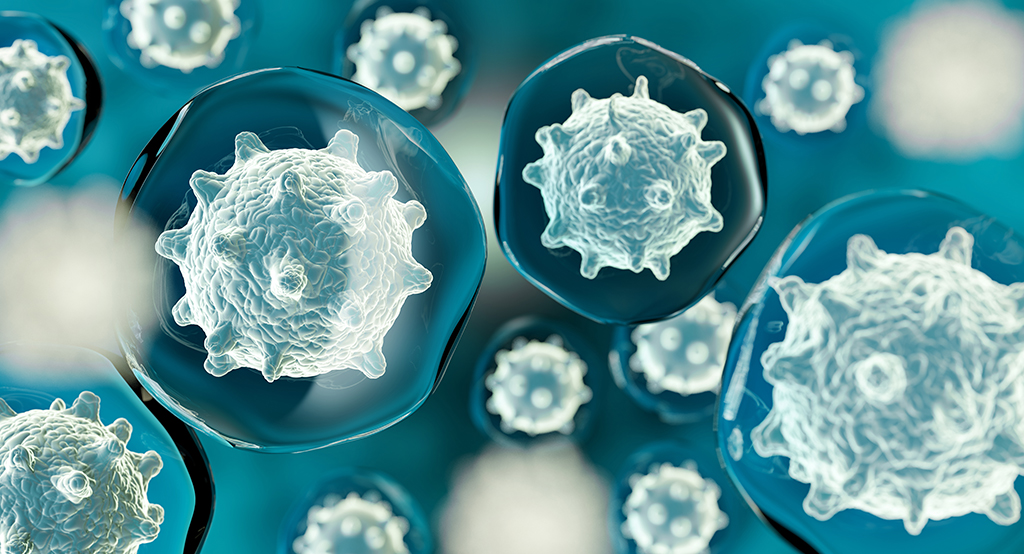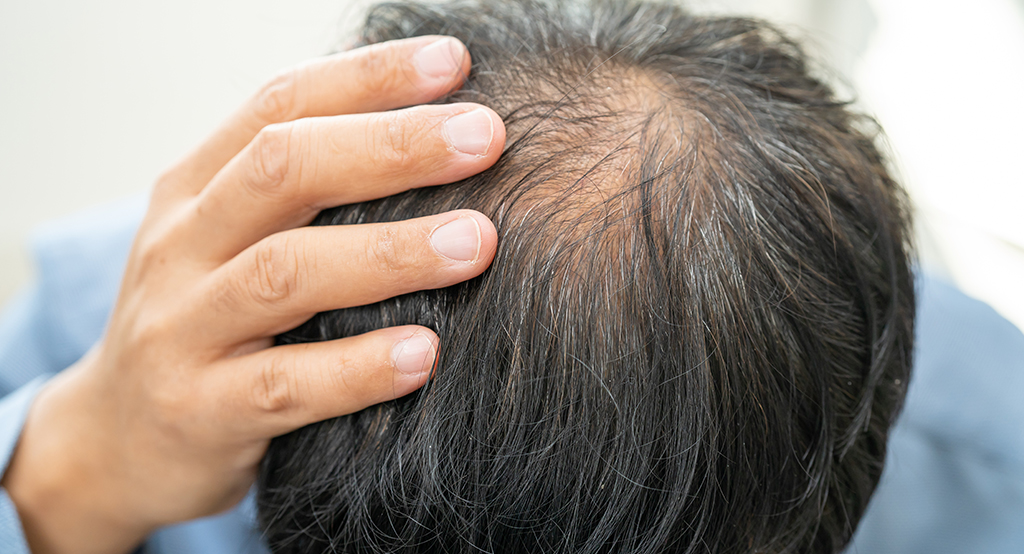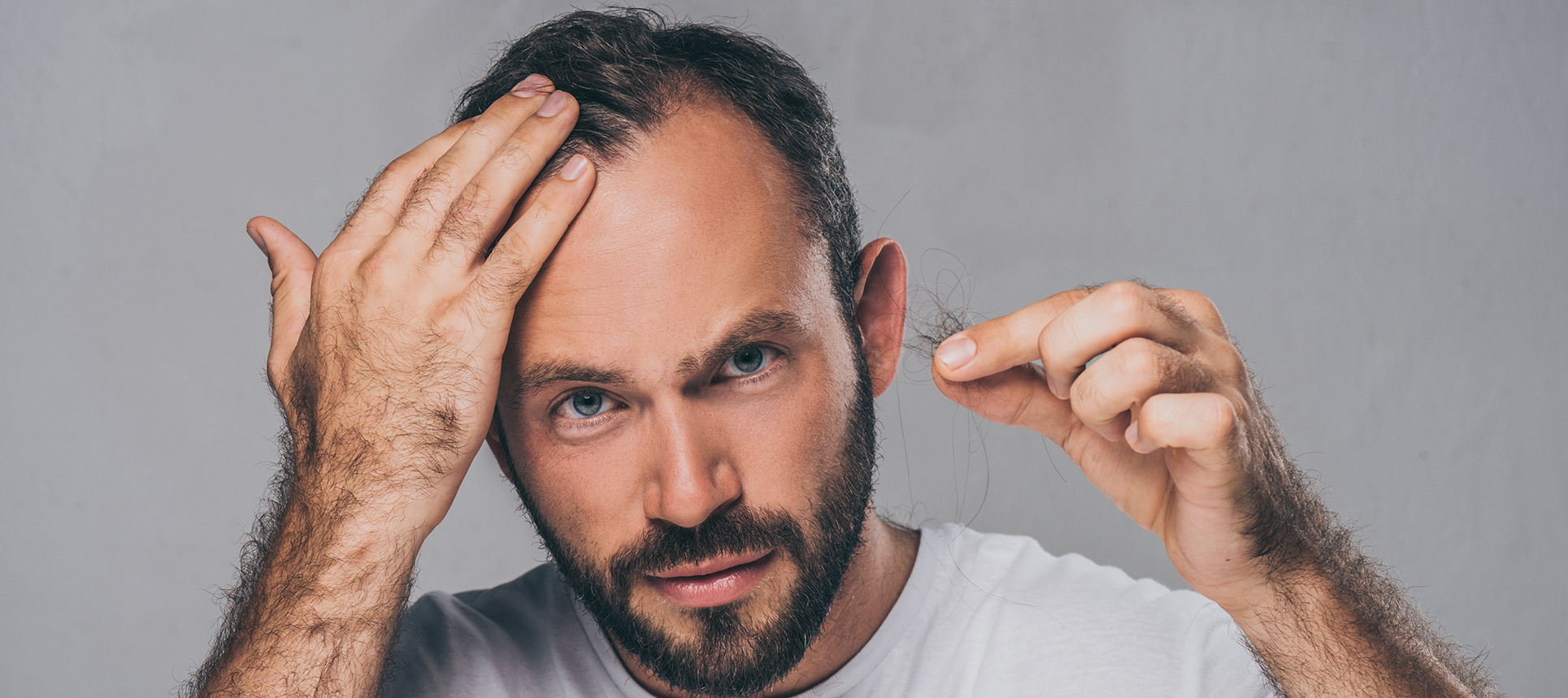Hair loss can be an emotional and frustrating experience, especially when it feels like it’s happening for no clear reason. You might be noticing more hair on your pillow, in the shower, or when brushing your hair—and suddenly, you’re Googling everything from vitamin deficiencies to stress levels. But hair loss, or alopecia, isn’t a one-size-fits-all condition. There are different types, different causes, and, thankfully, different treatments—especially when you’re in the hands of a qualified dermatologist.
For many people, hair is closely tied to self-image and confidence. So when it starts to thin, fall out, or shed in unusual amounts, it’s completely natural to feel anxious, embarrassed, or even helpless. You may start avoiding certain hairstyles or social situations, or you might feel reluctant to speak about it out loud. The good news is, you don’t have to go through it alone—or guess your way through endless supplements and shampoos. The first step is understanding what kind of hair loss you’re experiencing, and that starts with an expert.
Dermatologists who specialise in scalp and hair disorders have the knowledge and tools to get to the root of the problem—literally. They can help identify whether your hair loss is caused by hormones, stress, an autoimmune issue, nutritional deficiencies, or something else entirely. And more importantly, they can guide you towards targeted treatments that are actually likely to work for your specific situation. In this article, we’ll walk you through the main types of alopecia, explain what might be triggering your symptoms, and share how a clinic-led approach can help you get real answers and effective solutions.
What Exactly Is Alopecia?
Alopecia is simply the medical term for hair loss. It can affect the scalp, face, or even the entire body. Some types of alopecia are temporary and reversible, while others can be long-term or progressive if left untreated. The key is understanding which type you’re dealing with, so your treatment is based on the actual cause—not just guesswork.
It’s important to understand that alopecia isn’t one specific diagnosis—it’s a broad umbrella that includes a range of conditions, each with its own unique features. For example, some people may lose hair in small, coin-sized patches, while others might notice diffuse thinning across the entire scalp. In other cases, hair may shed in large quantities after a physical or emotional shock. What makes things even trickier is that some forms of alopecia can overlap, and symptoms can evolve over time, which is why professional assessment is so vital.
There are three common forms of alopecia seen in dermatology clinics: alopecia areata, androgenetic alopecia, and telogen effluvium. Each comes with its own set of triggers, symptoms and treatment strategies. But beyond these, there are also less common types—like traction alopecia (caused by tight hairstyles), scarring alopecias, and hair loss related to underlying skin conditions. The more accurate the diagnosis, the more personalised and effective your treatment will be. Dermatologists can use scalp imaging tools, blood tests, and detailed histories to identify what’s going on beneath the surface—and create a plan that gives you the best chance of seeing results.
Alopecia Areata: When the Immune System Gets Involved
Alopecia areata is an autoimmune condition. That means your immune system mistakenly targets your hair follicles, causing patchy hair loss—often in round or oval shapes. It can start suddenly, sometimes overnight, and it’s one of the more unpredictable types of alopecia.

In some cases, alopecia areata can progress to total loss of scalp hair (alopecia totalis) or even loss of all body hair (alopecia universalis), though this is less common. The patches may be smooth and without redness, itching or pain, which can make the condition even more confusing and unexpected for those experiencing it. It’s not linked to poor hair care, stress alone, or infections—but rather, a miscommunication in the immune system that interrupts the normal hair cycle.
Dermatologists will usually begin by examining your scalp closely and may recommend blood tests to check for any related autoimmune markers, thyroid imbalances, or nutritional deficiencies (like vitamin D or iron) that could be contributing to the problem. They may also assess if there’s a personal or family history of autoimmune conditions, which can be linked.
Treatment often involves scalp-based therapies, such as specialised creams or targeted injections to calm inflammation around the follicles and encourage regrowth. Some clinics may also offer light-based therapies or recommend supportive care like nutritional supplements and stress-reducing strategies.
The good news? In many cases, especially when caught early, hair can grow back fully—sometimes even without treatment. However, relapses are possible, which is why a long-term management plan with your dermatologist is essential.
Androgenetic Alopecia: The Genetic Factor

This type of hair loss is often referred to as male or female pattern baldness, and it’s the most common form of alopecia. It’s usually gradual and hereditary, with hair thinning around the crown or receding from the temples in men, and diffuse thinning across the top of the scalp in women.
Androgenetic alopecia tends to start in adulthood and progress slowly, making it harder to notice in the early stages. What begins as slightly more hair in the plughole or a thinner ponytail can, over time, lead to visible changes in scalp density. For women especially, it may feel like a loss of volume rather than defined patches, which can be distressing and difficult to disguise.
If you have family members with similar hair loss patterns, there’s a strong chance this may be your diagnosis. The condition is believed to be linked to how hair follicles respond to certain hormones—particularly androgens—which can cause the follicles to shrink over time and produce finer, shorter hairs. Eventually, some follicles may stop producing hair altogether.
At the clinic, a dermatologist can confirm this through a detailed scalp examination and sometimes with a dermatoscope, a tool that magnifies hair follicles to look for characteristic changes. In some cases, they may suggest a scalp biopsy or blood tests to rule out other causes.
Treatment may include topical formulas, oral therapies, or even platelet-rich injections, depending on the severity and stage of hair loss. Some clinics offer microneedling or low-level laser therapy as part of a broader plan. Early intervention is key to slowing progression and maintaining healthy hair density, and ongoing support from a specialist can help track your response and adjust your treatment accordingly.
Telogen Effluvium: Stress, Illness or Hormonal Shifts
If you’ve experienced sudden, noticeable hair shedding a few months after a big life event—like surgery, childbirth, illness, or a stressful period—it could be telogen effluvium. This is one of the most common causes of temporary hair loss, particularly in women, and it can be extremely distressing when it feels like handfuls of hair are coming out seemingly without warning.
This condition occurs when more hair follicles than normal enter the ‘resting’ (telogen) phase of the hair growth cycle at the same time, leading to diffuse shedding. Rather than patchy bald spots, you’ll notice a general thinning or more hair than usual in your brush, on your pillow, or in the shower. It can be alarming, but the silver lining is that telogen effluvium is usually temporary and reversible—especially when managed correctly.
A dermatologist will typically look at your medical history and may run blood tests to check iron levels, thyroid function, and hormonal balance, as well as possible vitamin deficiencies or recent weight loss. They’ll also ask about your lifestyle, stress levels, and any changes in medication or diet. Once the underlying cause is identified and addressed, the shedding usually slows down, and hair regrowth can begin naturally.
Supportive treatments, like scalp stimulation, topical therapies, or nutritional support, may be recommended to speed up recovery and restore volume. In many cases, just knowing what’s going on and that it’s not permanent can bring huge relief. With patience, the hair typically regrows within 3–6 months, though visible fullness may take a bit longer to return. Early reassurance and expert care can make a world of difference.
How Dermatologists Can Pinpoint the Root Cause
Hair loss can feel like a mystery—but it doesn’t have to be. A dermatologist can help unravel the puzzle with a mix of expertise and diagnostic tools. At a professional clinic, you can expect:
• A thorough consultation, including medical history and lifestyle factors
This first step is vital for understanding the bigger picture behind your hair loss. Your dermatologist will ask about recent stressors, medical events, diet, family history, and any existing health conditions. They may also explore your haircare routine, styling habits, and any supplements or medications you’re currently taking. By gathering a comprehensive overview, they can start narrowing down the likely causes. This approach saves time and avoids unnecessary or ineffective treatments.
• Scalp assessments, sometimes using high-resolution imaging
Close inspection of the scalp helps identify signs of inflammation, scaling, follicle miniaturisation, or scarring. High-resolution imaging tools, such as dermoscopy, allow the dermatologist to view your hair follicles in detail. This can help differentiate between various types of alopecia, even those with similar symptoms. It also allows them to track changes over time during treatment. In some cases, they may take photographs to monitor progress more accurately.
• Blood tests to rule out deficiencies, hormonal imbalances, or autoimmune conditions
Bloodwork is a powerful tool in identifying what your body might be lacking or fighting against. Common tests include checks for iron, vitamin D, thyroid hormones, and autoimmune markers. If something is out of balance internally, it can affect hair growth long before symptoms appear. These insights help guide treatment—whether that’s dietary changes, medical therapy, or referral to another specialist. It’s about getting to the why behind the hair loss, not just treating the symptom.
• Personalised treatment plans that suit your specific type of alopecia
Once the root cause is clear, your dermatologist will design a tailored plan based on your diagnosis, health status, and goals. This might involve topical treatments, in-clinic procedures, oral therapies, or lifestyle adjustments. You’ll also get guidance on what to expect in terms of results and timeframes. Plans are reviewed regularly and adapted as needed, based on how your scalp and hair respond. The goal is always to treat the cause—not just the fallout.
Rather than offering a one-size-fits-all solution, a specialist can tailor your care to address what’s really going on—whether it’s inflammation, genetics, stress, or something else entirely. That personalised, targeted approach gives you the best chance of meaningful, lasting improvement.
Treatment Options: A Personalised Approach
Once the type of alopecia is identified, your dermatologist will create a treatment plan just for you. This might include:
• Topical treatments to stimulate growth or reduce inflammation
These may include specially formulated serums or lotions designed to improve scalp health and promote follicle activity. Some are applied once or twice daily and work by encouraging blood flow to the area or calming inflammation that interferes with hair growth. It’s important to apply these consistently to see results, which often take a few months. Your dermatologist will explain how to use them effectively and what signs of improvement to look out for. Some formulations are better suited to certain types of alopecia, so personalised selection is key. Regular follow-ups ensure the product is doing its job—and allow for changes if needed.
• Oral therapies to correct internal imbalances or modulate hormones
These treatments are often used when blood tests reveal deficiencies, thyroid issues, or hormonal imbalances that may be contributing to your hair loss. Depending on the type of alopecia, your dermatologist might recommend nutritional supplements or prescription-based options to help rebalance the system. These therapies can be particularly effective for androgenetic alopecia or hair shedding linked to hormonal fluctuations. It’s essential to follow dosage guidance and report any side effects. Oral treatments usually work best when combined with topical or procedural therapies. Patience is key, as results often take several weeks to months to become visible.
• Scalp injections that target inflammation or nourish follicles directly
These in-clinic treatments involve delivering beneficial substances straight to the root of the problem. They can help reduce inflammation in autoimmune-related alopecia or revitalise dormant follicles in genetic or stress-related cases. The process is quick, and most patients describe it as mildly uncomfortable at most. Multiple sessions are typically needed, spaced out over weeks or months depending on your response. Results are gradual but can be very rewarding with the right patient profile. Your dermatologist will assess progress and adjust the protocol as needed.
• Lifestyle advice to manage stress, improve nutrition, and support overall scalp health
Hair health is deeply connected to general wellbeing, so lifestyle tweaks can make a surprising difference. Stress, poor diet, and lack of sleep can all influence the hair growth cycle. You might receive advice on incorporating hair-friendly nutrients, managing anxiety, or adjusting your haircare routine. Even daily habits—like how you tie your hair or what products you use—can be important. Dermatologists often work alongside nutritionists or therapists to offer a holistic care plan. These changes are supportive, not a substitute for medical treatment—but together, they create the best foundation for recovery.
Some clinics also offer complementary services like scalp microneedling or non-invasive light therapies, which can help improve circulation and encourage healthier hair growth over time. These options are particularly useful for stimulating sluggish follicles and can be combined with other treatments for an enhanced effect. They are safe, relatively painless, and typically require multiple sessions for best results. Your dermatologist can advise if these procedures suit your condition and goals. Often, it’s the blend of clinical treatment and consistent aftercare that delivers the most noticeable improvements. By working together with your dermatologist, you’ll have a plan that not only treats your hair loss—but supports your confidence along the way.
When to Seek Help
If you’re experiencing unusual hair loss—whether it’s a widening part, excessive shedding, bald patches, or thinning—you don’t need to wait for it to get worse. The sooner you speak to a dermatologist, the better your chances of slowing or even reversing the process. Early intervention means there’s more hair to preserve, and treatment is often more effective when started before the follicles become permanently inactive.
It’s completely normal to feel anxious or self-conscious about hair loss. Many people suffer in silence for months or even years before seeking help, often trying countless over-the-counter products with little to no improvement. But you’re not alone, and with the right support, there are options to explore—real, medically backed solutions based on your individual needs. The first step? A professional diagnosis and a treatment plan that makes sense for you.
A consultation could give you more than just answers—it could give you your confidence back.
Final Thoughts: Don’t Guess—Get Answers
Hair loss can be a confusing and emotional journey, especially when you’re trying to work out what’s going on by yourself. But you don’t have to guess. Understanding the type of alopecia you’re dealing with is the key to getting real results—and that’s where a dermatologist comes in.
Whether it’s patchy loss, overall thinning, or sudden shedding, a clinical approach can take the guesswork out and replace it with clarity, confidence, and a plan. Your hair is a reflection of your overall health, and you deserve answers. So if you’re worried about hair loss, take that first step and book in with a specialist—it could make all the difference.
